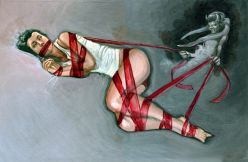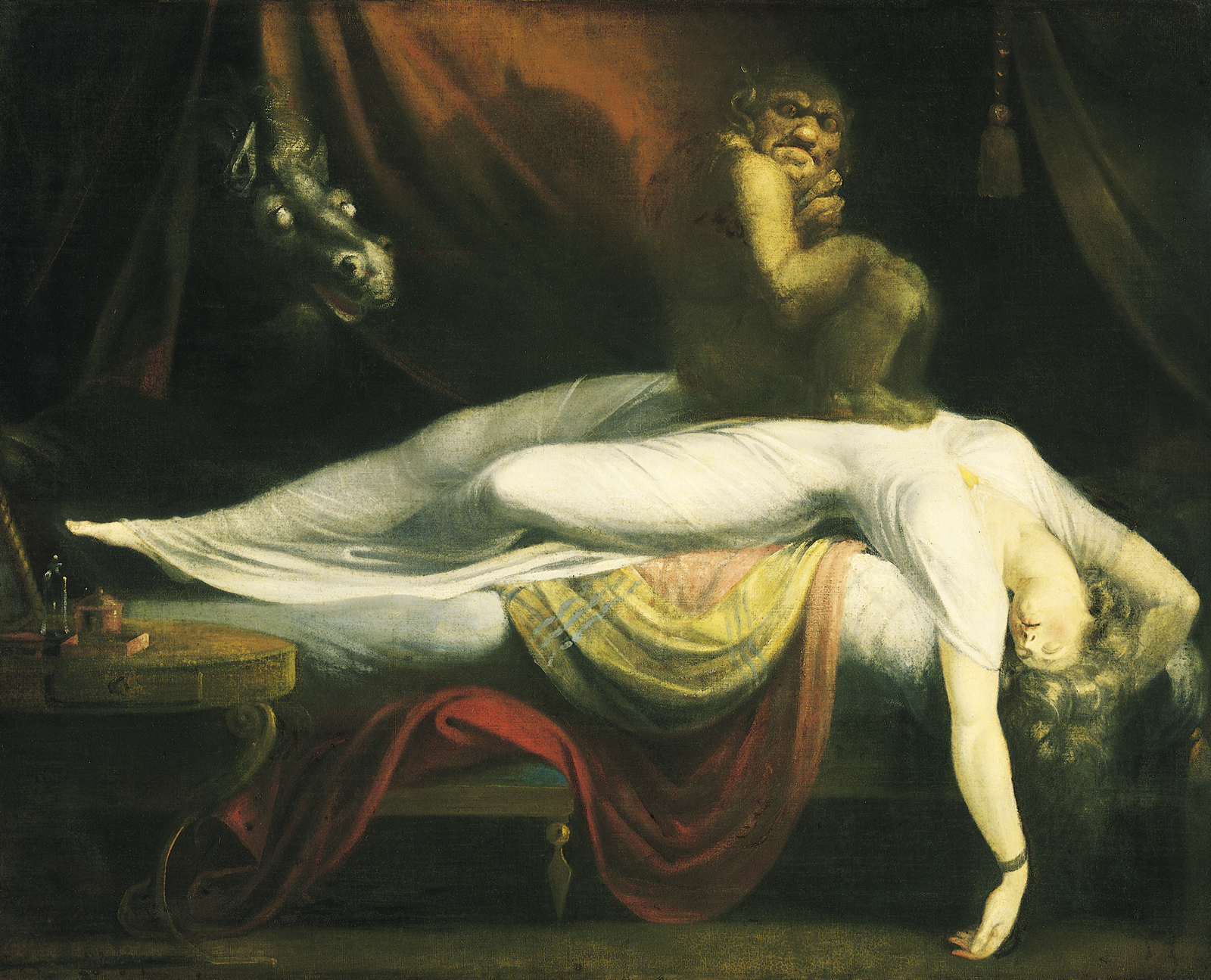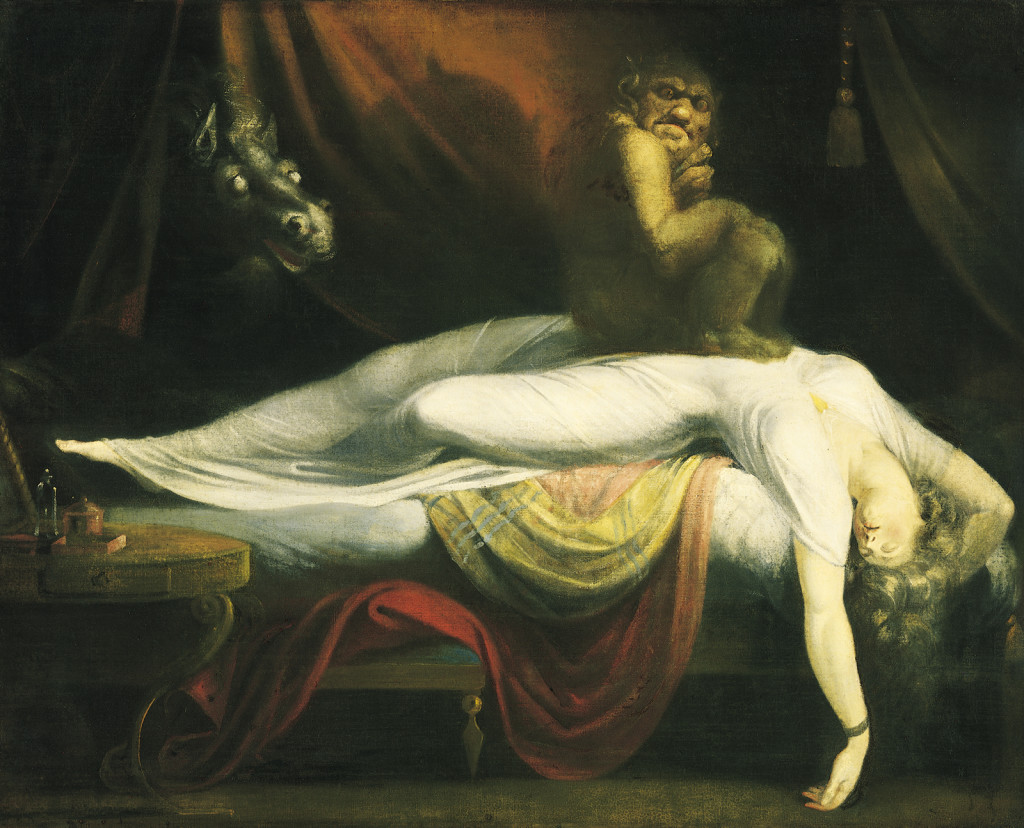Picture this: you’re in bed, asleep. You’re dreaming, a heavy involved dream, possibly a nightmare. You wake up suddenly but you’re still dreaming. You try to move but your limbs refuse to obey your command. In your befuddled half-waking half-sleeping state you realise you can’t move arms and legs; a momentary panic sets in, a feeling of powerlessness. Then the dream vanishes, then suddenly the movement returns.
This is sleep paralysis. The few seconds where it takes hold of the waking self are the closest we can ever come to emulating the feeling of being quadriplegic.
It exists because your brain is programmed to induce a restricted form of paralysis while you dream in order to prevent you hurting yourself, much as you see cats and dogs engaged in a form of mock-running while they are asleep, limbs twitching but not going anywhere. From Wikipedia (further information from the same article at the bottom):
Sleep paralysis is a phenomenon in which people, either when falling asleep or wakening, temporarily experience an inability to move (being paralyzed). More formally, it is a transition state between wakefulness and rest characterized by complete muscle atonia (muscle weakness). It can occur at sleep onset or upon awakening, and it is often associated with terrifying visions (e.g. an intruder in the room), to which one is unable to react due to paralysis. It is believed a result of disrupted REM sleep, which is normally characterized by complete muscle atonia that prevents individuals from acting out their dreams. Sleep paralysis has been linked to disorders such as narcolepsy, migraines, anxiety disorders, and obstructive sleep apnea; however, it can also occur in isolation.
There’s not much that scares me but “locked in syndrome” and paralysis must be two examples. It brings to mind the debate conducted in Whose Life Is It Anyway? about whether someone in that situation should have the right to demand to die, even though they can’t actually do the deed themselves, but that’s another story.

It’s a situation you never want to have to face, but for a very brief moment you experience that feeling.
By the way, the disturbing picture at the top is The Nightmare by the Swiss artist Johann Heinrich Füssli (AKA John Henry Fuseli.) From Wikipedia:
Interpretations of The Nightmare have varied widely. The canvas seems to portray simultaneously a dreaming woman and the content of her nightmare. The incubus and the horse’s head refer to contemporary belief and folklore about nightmares, but have been ascribed more specific meanings by some theorists. Contemporary critics were taken aback by the overt sexuality of the painting, which has since been interpreted by some scholars as anticipating Freudian ideas about the unconscious.
Finally, more on sleep paralysis:
Physiologically, sleep paralysis is closely related to REM atonia, the paralysis that occurs as a natural part of REM (rapid eye movement) sleep. Sleep paralysis occurs either when falling asleep, or when awakening. When it occurs upon falling asleep, the person remains aware while the body shuts down for REM sleep, and it is called hypnagogic or predormital sleep paralysis. When it occurs upon awakening, the person becomes aware before the REM cycle is complete, and it is called hypnopompic or postdormital. The paralysis can last from several seconds to several minutes, with some rare cases being hours, “by which the individual may experience panic symptoms” (described below). As the correlation with REM sleep suggests, the paralysis is not entirely complete; use of EOG traces shows that eye movement is still possible during such episodes; however, the individual experiencing sleep paralysis is unable to speak.
Hypnagogic and hypnopompic hallucinations are symptoms commonly experienced during episodes of sleep paralysis. Some scientists have proposed this condition as an explanation for reports of alien abductionsand ghostly encounters. Some suggest that reports of alien abductions are related to sleep paralysis rather than to temporal lobe lability. There are three main types of these hallucinations that can be linked to pathologic neurophysiology. These include the belief that there is an intruder in the room, the incubus, and vestibular motor sensations.
Many people that experience sleep paralysis are struck with a deep sense of terror, because they sense a menacing presence in the room while paralyzed—hereafter referred to as the intruder. This phenomenon is believed to be the result of a hyper vigilant state created in the midbrain. More specifically, the emergency response activates in the brain when individuals wake up paralyzed and feel vulnerable to attack. This helplessness can intensify the effects of the threat response well above the level typical to normal dreams; this could explain why hallucinations during sleep paralysis are so vivid. Normally the threat activated vigilance system is a protective mechanism the body uses to differentiate between dangerous situations and determine whether the fear response is appropriate. This threat vigilance system is evolutionarily biased to interpret ambiguous stimuli as dangerous, because “erring on the side of caution” increases survival chances. This could explain why those who experience sleep paralysis generally believe the presence they sense is evil. The amygdala is heavily involved in the threat activation response mechanism, which is implicated in both intruder and incubus SP hallucinations. The specific pathway the threat-activated vigilance system acts through is not perfectly understood. It is believed that either the thalamus receives sensory information and sends it on the amygdala, which regulates emotional experience—or that the amygdaloid complex, anterior cingulate, and the structures in the pontine tegmentum interact to create the hallucination. It is also highly possible that SP hallucinations could result from a combination of these. The anterior cingulate has an extensive array of cortical connections to other cortical area, which lets it integrate the different sensations and emotions we experience. The amygdaloid complex helps us interpret emotional experience and act appropriately. Most importantly, it helps us direct our attention to the most pertinent stimuli in a potentially dangerous situation and act appropriately. Proper amygdaloid complex function requires input from the thalamus. This creates a thalamoamygdala pathway capable of bypassing intense scrutiny of incoming stimuli, which allows for quick responses in a potentially life-threatening situation.
Typically these pathways let us quickly disregard non-threatening situations. In sleep paralysis, however, these pathways become over-excited and move into a state of hypervigilance where the mind perceives every external stimulus as a threat. The individual can create endogenous stimuli that contribute to the perceived threat.[9] A similar process occurs in the incubus hallucination, with slight variations.
The incubus hallucination is associated with the subject’s belief that an intruder is attempting to suffocate them, usually by strangulation.[10] It is believed that the incubus hallucination is a combination of the threat vigilance activation system and the muscle paralysis associated with sleep paralysis that removes voluntary control of breathing.[10] Several features of REM breathing patterns exacerbate the feeling of suffocation.[10] These include shallow rapid breathing, hypercapnia, and slight blockage of the airway, a symptom prevalent in sleep apnea patients.[9] Attempts at breathing deeply fail, and give the individual a sense of resistance, which the threat-activated vigilance system interprets as someone sitting on their chest, suffocating them.[9] The sensation of entrapment causes a feedback loop that involves the threat-activated vigilance system: fear of suffocation increases as a result of continued helplessness, which makes the individual struggle to end the SP episode.[10] The intruder and incubus hallucinations highly correlate with one another, and moderately correlate with the third type of hallucination, vestibular-motor hallucination, also known as out-of-body experiences.[10]
The third hallucination type differs from the other two in that it involves the brainstem, cerebellar, and cortical vestibular centers—not the threat activation vigilance system.[3] Under normal conditions, medial and vestibular nuclei, cortical, thalamic, and cerebellar centers coordinate things such as head and eye movement, and orientation in space.[9] In sleep paralysis, these mechanisms—which usually coordinate body movement and provide information on body position—activate and, because there is no actual movement, become confused and induce a floating sensation.[10] The vestibular nuclei in particular has been identified as being closely related to dreaming during the REM stage of sleep.[9] Unlike the other two types of hallucinations, vestibular-motor experiences arise from completely endogenous sources of stimuli.


